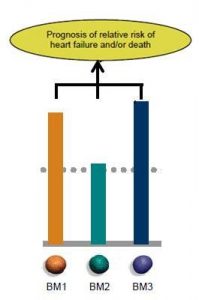Laboratory scores for risk stratification of patients with possible cardiac injury

Tech ID
16-015
Inventors
P. Kavsak
A. Worster
Patent Status
PCT filed
Stage of Research
Proof of principle available
Contact
Sunita Asrani
Associate Director
Business Development and Copyright
Abstract
Though cardiovascular disease resulting in heart attacks is a major cause of morbidity and mortality worldwide, most patients with chest pain symptoms presenting to the emergency department (ED) do not have a heart attack. However, there is no easy way to accurately identify which patients are at low or high risk of an acute cardiovascular event or death. The current hospital-based lab test to identify myocardial injury in patients uses a biomarker (i.e., cardiac troponin) that is not exclusively elevated with cardiac infarction, leading to misdiagnoses that can miss patients who need treatment and possibly admit patients for invasive tests and treatment who could be sent home.
McMaster researchers have developed a method to accurately determine the risk of an acute cardiovascular event or death that incorporates important biochemical parameters for easy interpretation. At least two different laboratory scores have been derived for both clinical and community settings, providing the safest approach to date to rule out heart attacks or death as soon as a patient comes to the ED. This also identifies those low-risk patients that can be released after initial bloodwork, which is not possible using other diagnostic pathways.
Applications
- Identifying patients with possible cardiac injury who are at low risk or high risk for an adverse cardiac event and death
- Assessing the risk for future myocardial infarction, heart failure, invasive cardiac procedures (PCI & CABG), hospital admission for refractory ischemic chest pain (i.e., unstable angina), and death (both all cause and cardiovascular death)
Advantages
- A simple, fast, and safe approach to identify people who are very likely to have a heart attack and those that won’t
- Decreases emergency department wait times and length of stay
- Provides a graded risk relationship, unavailable from any other algorithm using high-sensitivity cardiac troponin, so that appropriate treatments, care, and management can be given
- May be used in acute (e.g., emergency department) and nonacute (e.g., ambulatory, family medicine) clinical settings
- Can be used in community population as point-of-care testing or ongoing monitoring of cardiac health
- Can be extended to other patient populations for cardiac injury risk assessment

